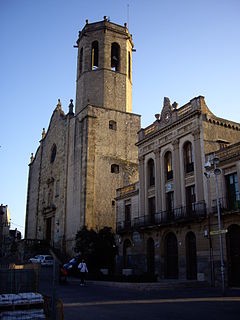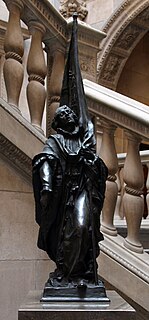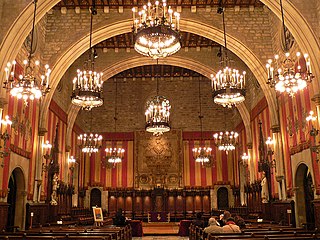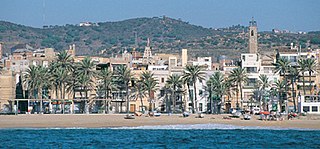
Badalona is a municipality to the immediate north east of Barcelona in Catalonia, Spain. It is located on the left bank of the small Besòs River and on the Mediterranean Sea, in the Barcelona metropolitan area.

Terrassa is a city in the east central region of Catalonia, in the province of Barcelona, comarca of Vallès Occidental, of which it is the cocapital along with Sabadell.
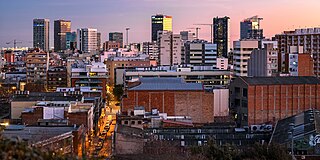
L'Hospitalet de Llobregat, often shortened to L'Hospitalet, is a municipality to the immediate southwest of Barcelona in Catalonia, Spain.

Esplugues de Llobregat is a municipality of the Barcelona metropolitan area. It belongs to the comarca of Baix Llobregat, Barcelona province, Catalonia, Spain.
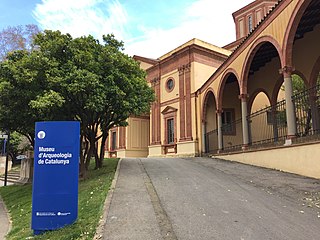
The Archaeology Museum of Catalonia is an archaeological museum with five venues that exposes the most important archaeological collection of Catalonia, focusing on prehistoric times and ancient history. The museum was originally founded in 1932 by the Republican Government of Catalonia. The modern institution was created under the Museums of Catalonia Act in 1990 by the Ministry of Culture of the same Government.

Sant Feliu de Llobregat is an industrial city and municipality in Catalonia, Spain, in the province of Barcelona. It is the capital of the comarca of Baix Llobregat, and the see of a bishopric since June 2005.

The Museu Nacional d'Art de Catalunya, abbreviated as MNAC, is the national museum of Catalan visual art located in Barcelona, Catalonia, Spain. Situated on Montjuïc hill at the end of Avinguda de la Reina Maria Cristina, near Pl Espanya, the museum is especially notable for its outstanding collection of romanesque church paintings, and for Catalan art and design from the late 19th and early 20th centuries, including modernisme and noucentisme. The museum is housed in the Palau Nacional, a huge, Italian-style building dating to 1929. The Palau Nacional, which has housed the Museu d'Art de Catalunya since 1934, was declared a national museum in 1990 under the Museums Law passed by the Catalan Government. That same year, a thorough renovation process was launched to refurbish the site, based on plans drawn up by the architects Gae Aulenti and Enric Steegmann, who were later joined in the undertaking by Josep Benedito. The Oval Hall was reopened in 1992 on the occasion of the Olympic Games, and the various collections were installed and opened over the period from 1995 to 2004. The Museu Nacional d'Art de Catalunya was officially inaugurated on 16 December 2004. It is one of the largest museums in Spain.
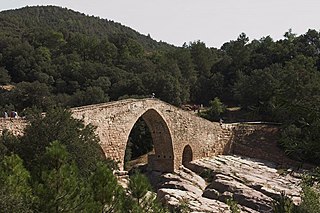
Cercs is a municipality in the comarca of Berguedà in Catalonia. It is situated on the right bank of the Llobregat river above the Baells reservoir. It is the site of an important power station which burns the lignite extracted at Fígols and Saldes. The town is served by the C-1411 road between Berga and the Cadí tunnel.

Sant Climent de Llobregat is a municipality in the comarca of Baix Llobregat, Barcelona Province, Catalonia, Spain. It is connected by road with Viladecans and Sant Boi de Llobregat.
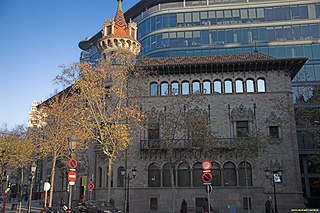
The Barcelona Provincial Council Local Museum Network, also known as Catalonia’s Biggest Museum, is a tool for support and collaboration from and for the museums of the province, which makes available to municipalities a series of services and actions aimed at improving, through the provision of direct services and research into viable formulas for supramunicipal cooperation, the management, conservation and dissemination of heritage and the museum facilities of the towns of Barcelona province. It is managed from the Cultural Heritage Office, which in turn depends on the Department of Knowledge and New Technologies of Barcelona Provincial Council.

The Can Tinturé Museum, in Esplugues de Llobregat, is located in a house built at the end of the 19th century by architect Claudi Duran i Ventosa, and is the first monographic sample tile museum in Spain. The Can Tinturé Museum also manages the museum at the Pujol i Bausis factory, La Rajoleta, which was a point of reference in the production of Catalan industrial tiles, especially during the highpoint of Art Nouveau. The Museum is part of the Barcelona Provincial Council Local Museum Network and of the territorial system of the Science and Technology Museum of Catalonia.

The L’Esquerda Archaeological Museum, located in Roda de Ter, was opened in 1988 as a place to house the material from the archaeological excavations at the L'Esquerda site and bring the findings closer to the public. It is part of the Barcelona Provincial Council Local Museum Network and ‘The Iberian Route’, organised by the Archaeological Museum of Catalonia (MAC).
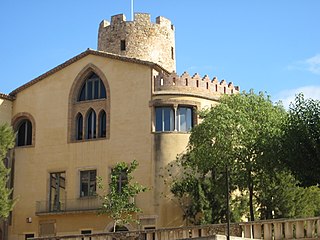
The Balldovina Tower Museum of Santa Coloma de Gramenet in Catalonia, Spain, is a local pluridisciplinary museum, the aim of which is to protect, conserve, study and disseminate the cultural and natural heritage of the territory. The museum, which is part of the Barcelona Provincial Council Local Museum Network, looks after its own collections as well as the monumental heritage of the town of Santa Coloma.

The Museum of the History of Barcelona is a history museum that conserves, researches, communicates and exhibits the historical heritage of the city of Barcelona, from its origins in Roman times until the present day. The museum's headquarters are located on Plaça del Rei, in the Barcelona Gothic Quarter. It also manages several historic sites all around the city, most of them archaeological sites displaying remains of the ancient Roman city, called Barcino in Latin. Some others date to medieval times, including the Jewish quarter and the medieval royal palace called the Palau Reial Major. The rest are contemporary, among them old industrial buildings and sites related to Antoni Gaudí and the Spanish Civil War.
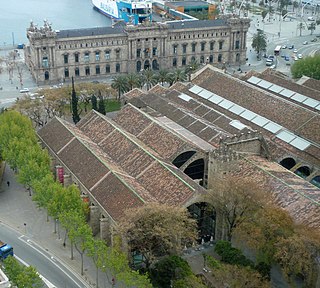
The Maritime Museum of Barcelona is located in the building of Drassanes Reials de Barcelona, the royal arsenal of Barcelona, dedicated to shipbuilding between the thirteenth century and eighteenth century. The first mention of these arsenals date from 1243 in a document indicating the boundaries of the city of Barcelona where it mentions its shipyard.

The Archaeology Museum of Catalonia in Girona is one of the five venues of the Archaeology Museum of Catalonia, located in the Sant Pere de Galligants Benedictine abbey of Girona since its foundation in 1857. It contains materials found during archaeological excavations at various sites in the province of Girona, dating from prehistory to the Middle Ages.

The following outline is provided as an overview of and topical guide to Barcelona:



